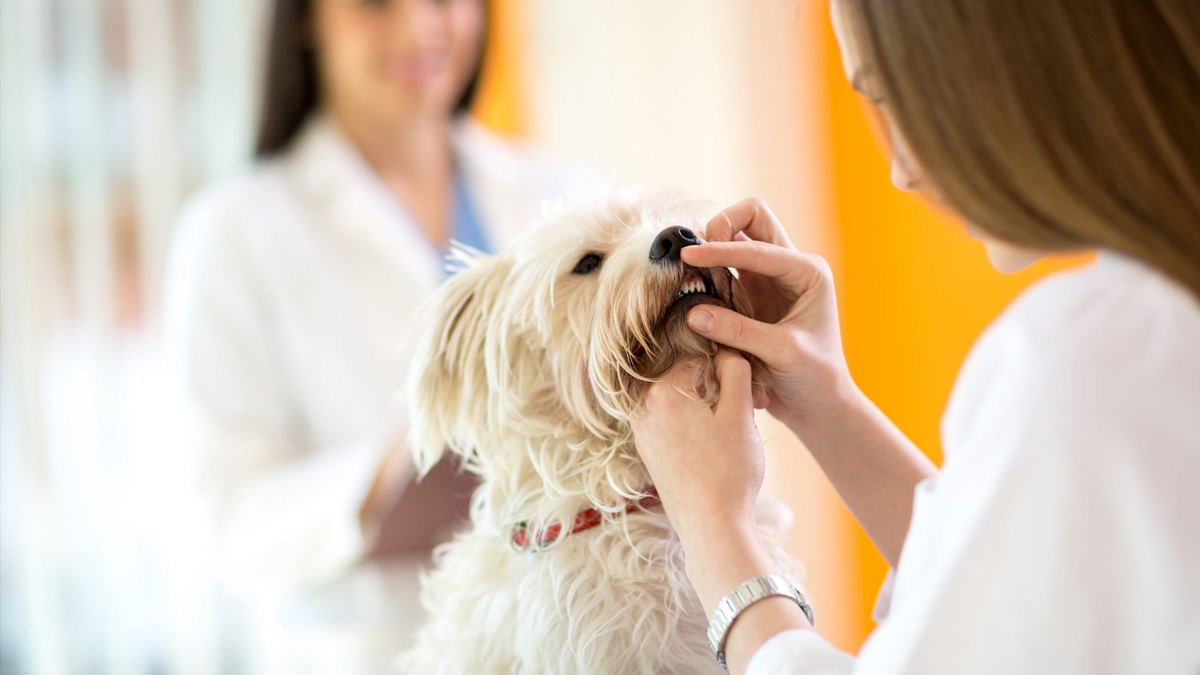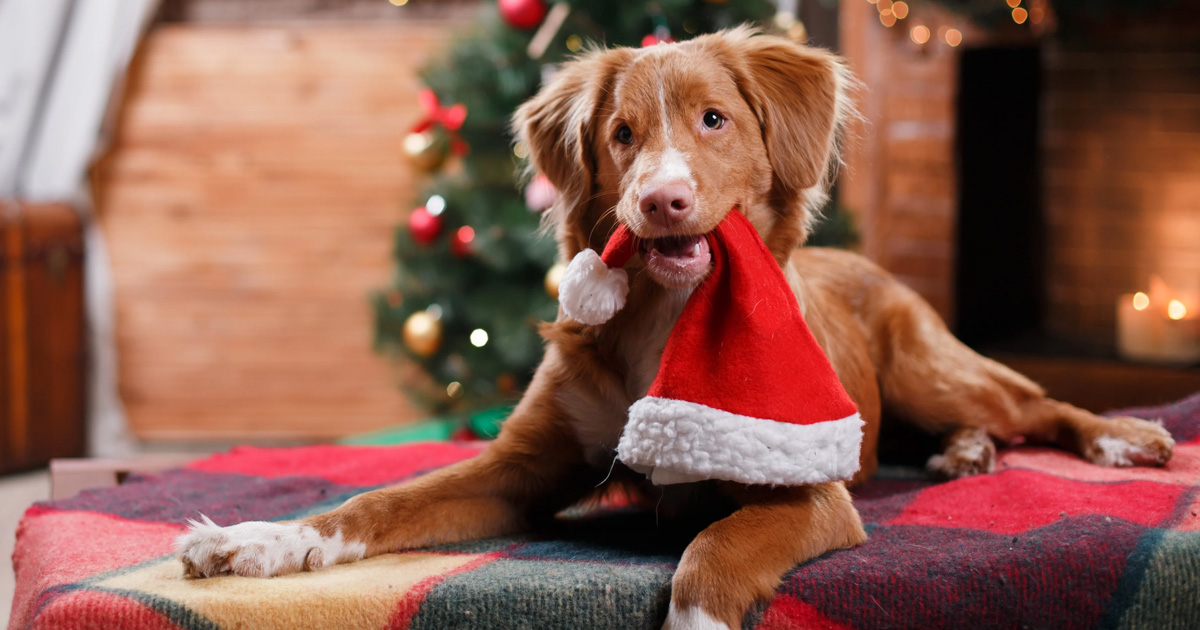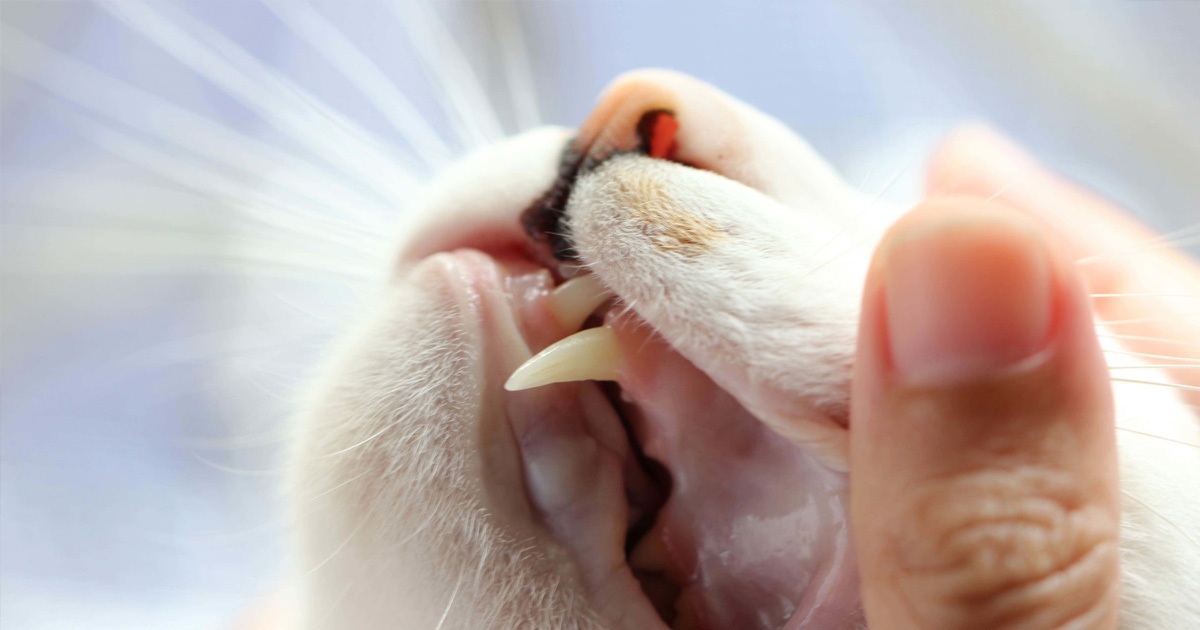Dental Care for Dogs and Cats

Periodontal disease is one of the most common conditions we treat. Read about why the risk factors are so crucial to prevent.
Periodontal disease is one of the most common diseases in our companion animals. Unfortunately, even though 9 of 10 dogs and 8.5 out of 10 cats over the age of 3 are affected, it is left untreated for the majority of affected pets. That is an astonishing number of pets! Dental care for dogs and cats is just as important as other preventive care such as vaccines, spay and neuter, yearly blood work, and heartworm and parasite control. As their veterinarian, we sometimes only see our patients every 6 months for wellness checks. As a pet parent, it is important to be able to recognize the signs of periodontal disease at home between these visits. Sometimes, it is assumed that some of the changes seen at home are attributed to aging and decreased appetite and finicky eaters – typically this is not so.
Signs of Periodontal Disease
- Halitosis (bad breath)
- Walking to food bowl, picking up pieces but then dropping them
- Decreased appetite
- Increased salivation/drooling
- Preference change to softer food from crunchy kibble
- Bleeding gums
At-Home Dental Care for Dogs and Cats
Ok, what can you do at home to keep your pet’s mouth healthy and fresh smelling? Good habits start young — it is much easier to get a 10lb Labrador puppy used to the idea of dental care versus when said Labrador is now a whopping 100lbs. Gently get your pet used to their mouth being opened, their lips being lifted to look at their teeth. Make it enjoyable, have a favorite treat handy for when they do a great job! Once they are comfortable with this, you can start introducing toothbrush and pet toothpaste. At Mixed Pet, we carry a few different flavors of toothpaste for your pets. Ideally, your pet’s teeth are brushed daily for optimal results.
Now, some pets, regardless of how early you start brushing their teeth, will not tolerate it (or we are just busy parents). In these cases, there are alternatives to try and keep your pet’s mouths healthy. We have many products that are approved by the VOHC (Veterinary Oral Health Council, yes, such a council exists). As not every treat that is sold in pet or grocery stores for dental health has earned the seal of approval from the VOHC (the product needs to be proven to help with periodontal disease). The products range from daily dental CET chews to prescription food such as Hills T/D (that stands for Tartar Diet) to kitty Greenies dental treats to CET oral rinses added to the drinking water. There are no excuses for your pet not to have healthy chompers!
Risk Factors for Dental Disease
- No dental care regimen at home
- Age of pet
- Smaller breed dogs
- Retained baby teeth
- Chewing on objects such as rocks, table legs or bones
- Lack of yearly preventive professional cleanings
Dental Surgery
As humans, we know that brushing and flossing daily are an important part of keeping our mouth healthy. Even so, twice yearly cleanings by our doctors are still recommended as there will be plaque and tartar accumulation that daily brushing and flossing will not get. Our pets are no different. Professional anesthetized yearly dental cleanings are recommended for our dogs and cats. First, this affords us the opportunity to do a thorough oral exam while the pet is anesthetized. Second, we can look for and measure pockets in the gingiva, another way of assessing periodontal disease. Third, we use an ultrasonic scaler to remove the tartar, followed by polishing the enamel. For some pets that have infection present already, we may recommend starting on antibiotics prior to the cleaning. Dental radiographs will be performed after your pet is anesthetized. Because it is an anesthetic procedure, we do require recent blood work. In addition, we place an intravenous catheter the morning of the cleaning which allows us access for anesthesia induction and IV fluids during the procedure to help support cardiovascular system. The pet’s airway is protected with an endotracheal tube and is used to deliver the inhaled gas anesthesia and oxygen. Your pet will be monitored with pulse oximetry (to ensure adequate oxygenation), EKG, blood pressure and temperature. As your pet receives their dental cleaning, they are on a heating pad to help maintain body temperature. For some pets, there will be a need for extractions. Rest assured, they will receive a local block to help with pain control, a pain injection prior to waking up as well as going home with pain medication and in some cases, antibiotics. Once finished, the pet is recovered on the heating pad and then gently placed in a kennel with a blanket when they are awake for an ultra comfy recovery.
Dental Care for Dogs and Cats Recap
- Biannual exams need to include oral examination, many things can change in 6 months
- Start dental care for dogs or cats at a young age, but it’s never to late
- Great oral care involves brushing teeth, dental treats, diets and liquid additives
- Yearly preventive dental cleanings are necessary, before signs of disease occur
- Dental radiographs to help us look at disease below the gum line
- As the pet owner, you need to be proactive and involved in their oral health
Frequently Asked Questions
Yes. Dental disease can include very painful tooth-root abscesses, severe gum infections, broken teeth, all of which can lead to advanced kidney disease and heart disease leading to death.
You cannot adequately clean your dog’s teeth without brushing, no matter what the dental product ads might tell you.
Early plaque can be removed with a toothbrush. Advanced plaque and tartar require a dental cleaning under anesthesia. If tartar is visibly present it is also under the gumline and cannot be removed without anesthesia.
Absolutely. FORL’s (Feline Oral Resorptive Lesions) are extremely painful and will cause cats to not eat. In severe cases it can cause death.
We recommend all cat and dog owners brush their pet’s teeth. Once tartar is present, brushing will not be effective.
Early plaque can be removed with a toothbrush. Advanced plaque and tartar require a dental cleaning under anesthesia.
Yes. Some cats have a disease that requires all of their teeth to be extracted and they live normal lives.


